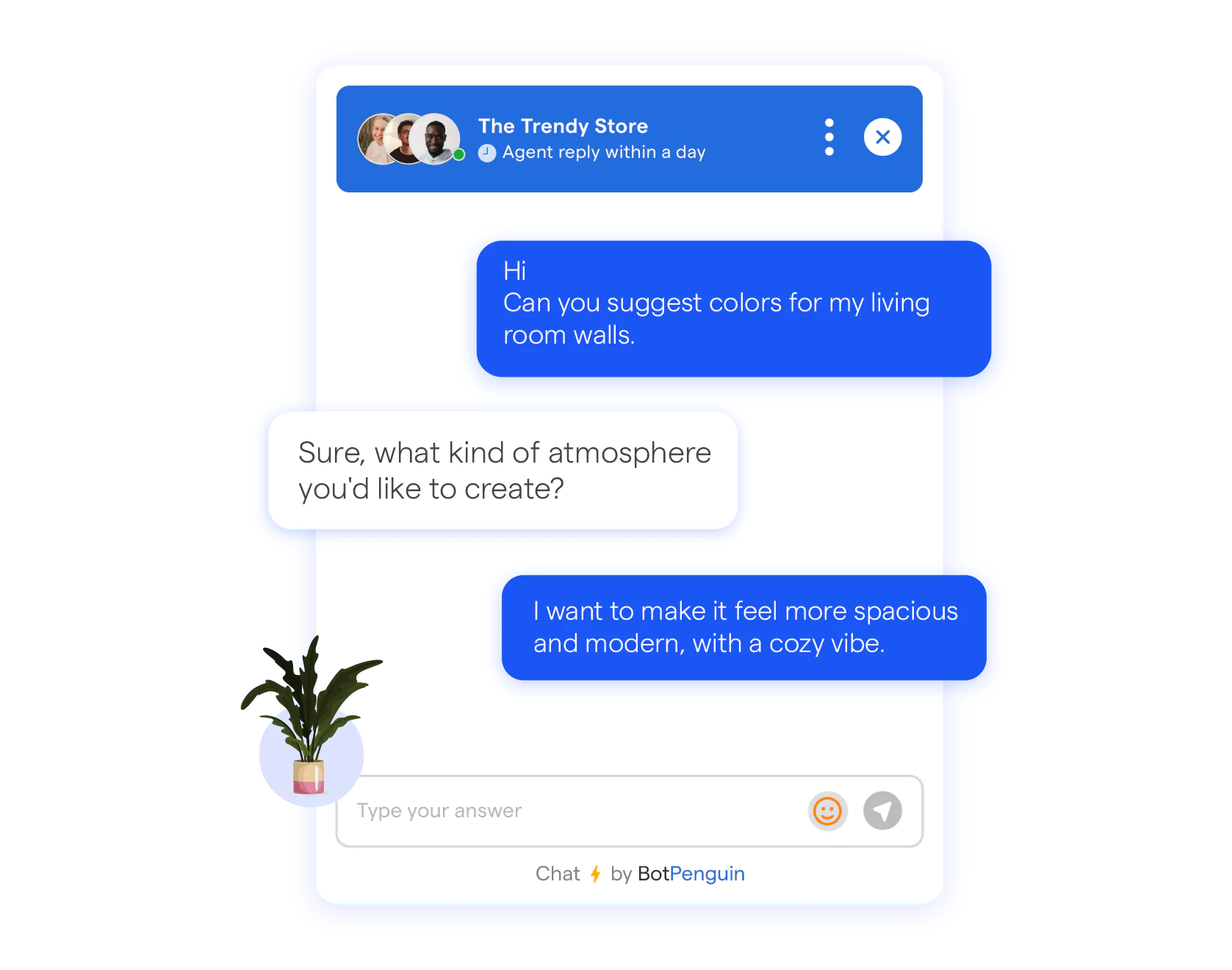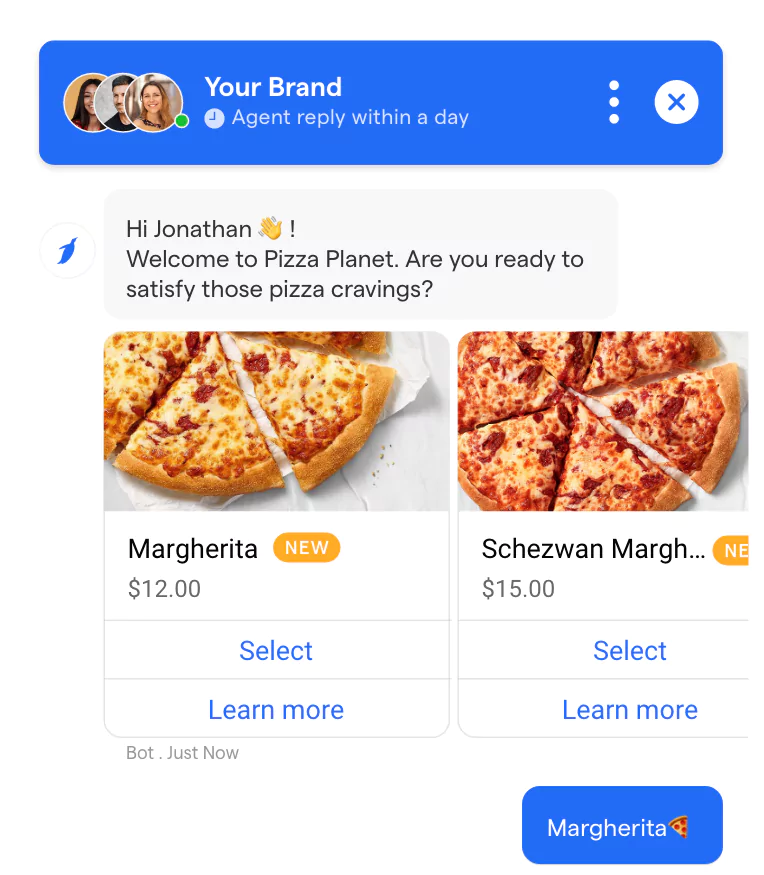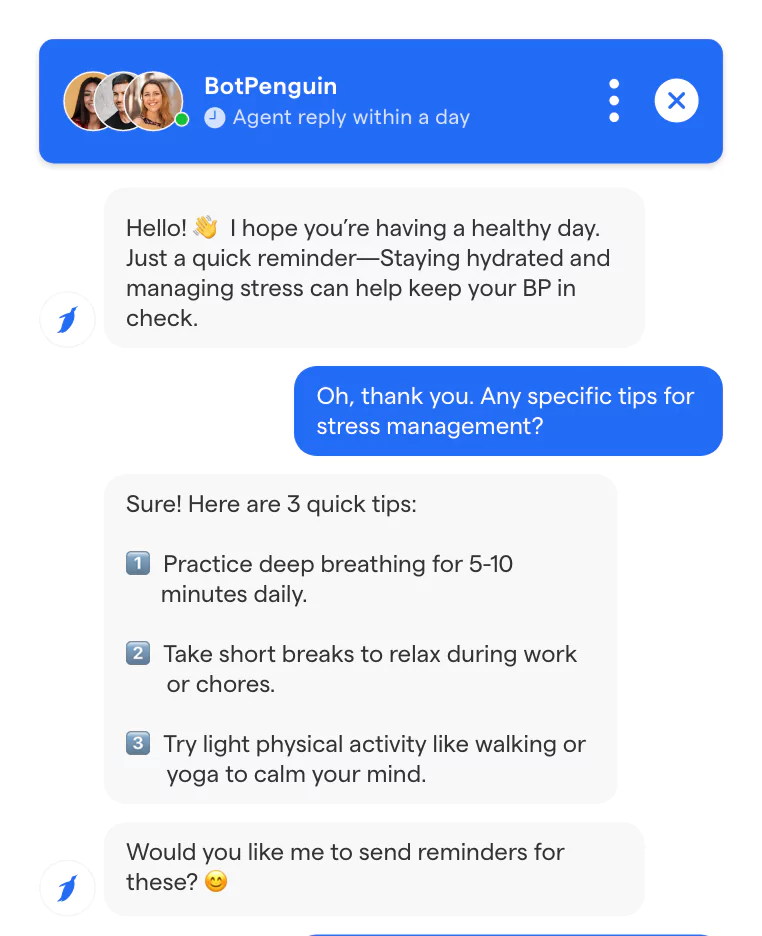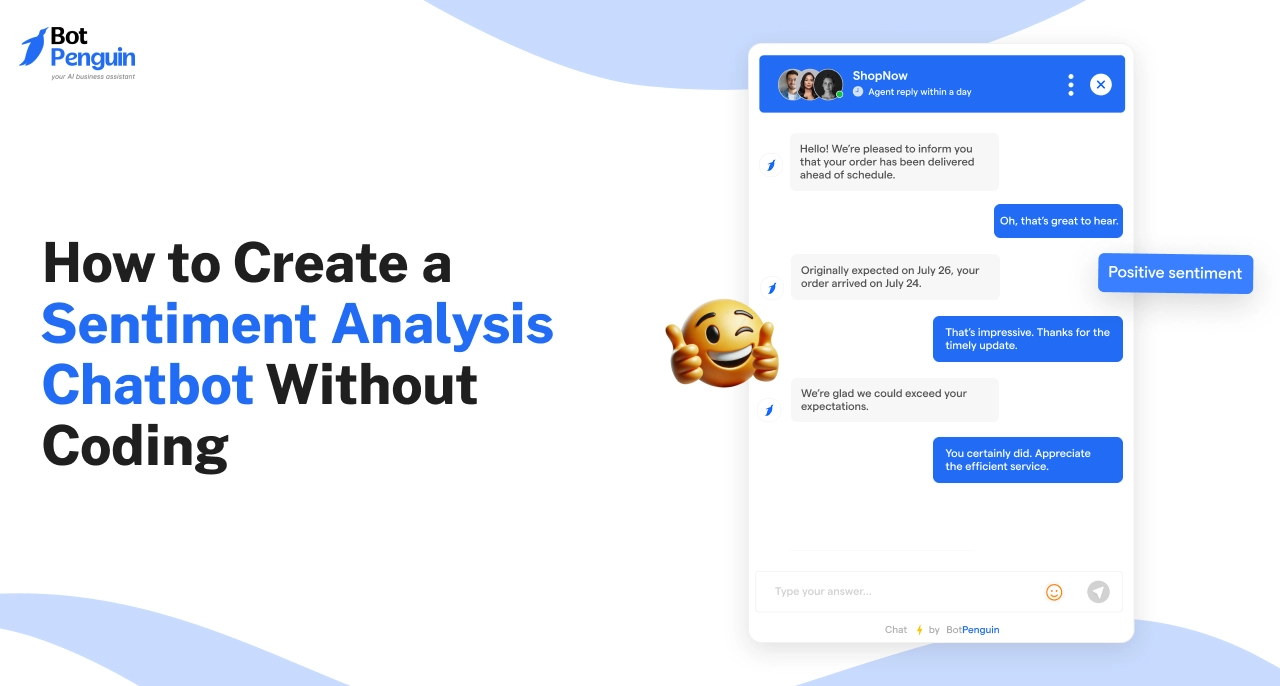Most chatbots don’t get emotions. That’s a problem.
When a frustrated customer says, “This is ridiculous,” and the bot responds with a cheerful, “How can I help you?”—it kills trust. That disconnect turns users off fast.
Today, businesses expect more from automation. Bots should understand tone, urgency, and mood. That’s where sentiment analysis for chatbots comes in.
It lets a bot detect whether someone’s angry, confused, or satisfied and then responds accordingly. A chatbot using sentiment analysis can escalate a complaint, switch tone, or even pause to ask clarifying questions.
That emotional layer isn’t a bonus. It’s the difference between a bot that helps and one that annoys.
Brands like Netflix already use chatbot sentiment analysis to prioritize angry users and fix issues faster.
This blog breaks it all down what it is, how it works, real-world examples, and how to get started. Whether you’re building a new bot or fixing one that’s not cutting it, understanding sentiment analysis in chatbots is your next move.
Got it. Let’s level it up.
What is Sentiment Analysis Chatbot?
A sentiment analysis chatbot is a chatbot that can understand emotions in text.

Instead of just reacting to words, it reads the user’s tone—whether someone sounds happy, angry, confused, or calm—and changes its reply based on how the person feels.
This is done using AI tools like natural language processing (NLP) and machine learning. These tools help the bot figure out what mood a message carries and respond in a way that fits the situation.
So, when someone types “This is so annoying,” the bot doesn’t reply with a cheerful “How can I help you?” It notices the frustration and shifts its response to something more helpful and empathetic.
That’s the difference between a basic bot and a chatbot with sentiment analysis—one responds to what you say, the other to how you feel.
Types of Emotions a Sentiment Analysis Chatbot can Detect
To make smart choices, the chatbot first needs to know what type of emotion it’s dealing with.
Most systems start with three basic sentiment types.
Basic: Positive, Negative, Neutral
These are the core categories every sentiment analysis chatbot uses:
- Positive: The user is happy, satisfied, or calm
“Awesome, thanks a lot!”
- Negative: The user is upset, angry, or annoyed
“This is ridiculous, I’ve had enough.”
- Neutral: The user is just asking a question or giving info
“Can you tell me when my order ships?”
Even this simple layer gives the chatbot a huge advantage in handling the conversation the right way.
Advanced: Joy, Anger, Fear, etc.
More advanced chatbots take it further by detecting detailed emotions.
They can recognize feelings like joy, sadness, anger, fear, and more. That’s what makes a chatbot sentiment analysis system truly feel intelligent—not just reactive.
Real-world sentiment analysis chatbot example:
A customer says, “I’m panicking—my payment didn’t go through.”
The bot senses fear and urgency.
It replies: “Let’s fix this right away. I’m here to help.”
This level of emotional response creates trust. And trust builds better customer experiences.
How Sentiment Analysis Works in Chatbots
The entire system runs on a structured pipeline. It starts with input and ends with an emotionally aware response. Here’s how sentiment analysis for chatbots actually works behind the scenes.
Step 1: Input Collection (Text or Voice)
It all starts with a user message.
The user types a sentence into a chat window or speaks into a voice interface. If it’s voice, speech recognition converts it to text. That message becomes the raw input.
📌 Sentiment analysis chatbot example:
A customer writes, “This is ridiculous. I’ve been waiting for hours.”
The chatbot doesn’t just see a complaint—it sees a potential turning point in the user experience.
Step 2: Preprocessing (Cleaning and Structuring)
Next, the chatbot prepares the message for analysis.
It removes unnecessary characters, corrects spelling errors, and breaks the sentence into components—called tokens. This could include words, punctuation, emojis, or even the structure of the sentence.
Why this matters: Emotions hide in patterns. A simple “Great.” with a period might sound flat. But “GREAT!!!” means something entirely different.
Sentiment analysis using chatbot models need clean data to catch those patterns accurately.
Step 3: Sentiment Detection (ML/NLP Models)
Now the system interprets emotion.
Using machine learning and natural language processing, the chatbot runs the cleaned message through a trained model. It compares the text to thousands (or millions) of previous examples to spot emotional signals.
It might detect:
- Positive sentiment: “This is amazing, thank you!”
- Negative sentiment: “I’m really upset with this service.”
- Mixed emotion: “Thanks, but this took way too long.”
This is the heart of chatbot sentiment analysis—understanding not just intent, but emotional tone.
Step 4: Adaptive Response Generation
Now comes the smart part: how the bot replies.
If the sentiment is negative, the bot might switch to a more empathetic tone or escalate the chat to a human agent. If it’s positive, it may offer rewards, ask for feedback, or keep the mood light.
This isn’t guesswork. It’s a trained behavior based on emotional input.
💬 User says: “I’m really disappointed.”
🤖 Chatbot replies: “I’m sorry this didn’t meet your expectations. Let me help fix it right now.”
Tools and Technologies Behind a Chatbot Using Sentiment Analysis

Once a chatbot understands emotion, it needs the right tools to process, classify, and respond. While the tech behind this can get a little complex, the outcome is simple—smarter conversations that actually make sense.
If you're curious, here's what powers a sentiment analysis chatbot.
APIs (Google Cloud NLP, IBM Watson, Azure)
These APIs are like emotion detectors for chatbots.
- Google Cloud NLP analyzes emotional tone in real-time chats.
- IBM Watson can break down messages into mood and urgency.
- Azure Text Analytics identifies whether users are happy, upset, or neutral.
All these tools help deliver emotion-aware responses across platforms. They're often used in enterprise-level chatbots with sentiment analysis where precision matters.
Python Libraries (TextBlob, NLTK, BERT)
If you're building something custom, Python gives you serious flexibility.
- TextBlob helps detect polarity and subjectivity.
- NLTK offers control for training models on specific data.
- BERT, from Google, provides deep contextual emotion detection—especially useful in complex or sarcastic messages.
These libraries are powerful. But they do require coding, model training, and testing.
Not a developer? No problem
While the tools above offer powerful capabilities for building custom sentiment analysis systems, they often require technical knowledge, coding skills, and time-consuming setup.
You’re not alone—and you don’t need to write a single line of code to launch a chatbot with sentiment analysis.
No-code platforms like BotPenguin make it simple: just drag, drop, and connect. Let’s see how it’s done.
How to Get Started with a Sentiment Analysis Chatbot with No Code Needed
If you’re not a developer, no problem.
Platforms like BotPenguin simplify the process of building a chatbot using sentiment analysis. You don’t need to train AI models or manage APIs. Everything is ready to go.
Here’s how you can launch your own chatbot with sentiment analysis in just a few steps.
Step 1: Create a Free Account

Head over to BotPenguin and sign up. It’s quick and doesn’t require any setup on your own servers.
Once inside, you get access to a visual dashboard to build and manage your bot.
Step 2: Build Your Chat Flow
Use a drag-and-drop interface to map out conversations.
You can set up greetings, FAQs, lead forms, and customer service flows—all without writing code. Decide how your bot should respond to different questions and scenarios.
Step 3: Connect with AI-Powered Sentiment Models
This is where the real magic happens.
BotPenguin has built-in support for sentiment detection. Once connected, your chatbot can automatically read emotional tone—positive, negative, or neutral—and adjust responses in real time.
It also taps into advanced language models like ChatGPT, Gemini, Claude, and DeepSeek to better understand mood, context, and intent—making replies more accurate and in tune with how users feel.
This is the heart of sentiment analysis in chatbots: understanding how users feel and replying in a way that matches their mood.
Step 4: Go Live Anywhere
Deploy your bot on your website, WhatsApp, or social channels.
Your sentiment analysis chatbot will now talk to users, detect emotional signals, and respond in a way that feels more human—without requiring any custom development.
Key Benefits of Using a Chatbot with Sentiment Analysis

When a chatbot can pick up on how someone’s feeling, it can respond more effectively. Below are some of the ways this creates better conversations and improves overall user experience.
Improve Customer Satisfaction
When bots recognize emotion, responses get better.
A sentiment analysis chatbot can spot when a user is frustrated and reply with empathy instead of default answers. That alone improves how people feel during support.
It’s not just about solving problems—it’s about how the solution is delivered.
Happy users = better CSAT scores.
Escalate Negative Conversations Faster
Most unhappy users won’t say “I’m angry.”
They’ll drop hints. A chatbot using sentiment analysis can catch those signs early—words like “unacceptable” or “still waiting”—and take action fast.
It can escalate to a human or switch to a more direct resolution path.
This stops problems from boiling over.
Collect Real-Time Emotional Feedback
Traditional feedback forms come after the conversation ends. That’s too late.
Sentiment analysis in chatbots captures how users feel while they’re chatting. You get live emotional data—without even asking for it.
This helps teams track how support feels, not just how fast it is.
Boost Conversions Through Emotional Triggers
People don’t just buy logically—they buy emotionally.
A chatbot with sentiment analysis can identify excitement or hesitation and adjust its pitch. If a user sounds interested but unsure, the bot can offer a quick incentive or reassurance.
This emotional timing makes conversions smoother and smarter.
Enable Personalized Experiences at Scale
Not every customer wants the same thing.
A sentiment analysis chatbot can adjust tone, message flow, and next steps based on each user’s mood. That means personalized service—without needing a massive team.
This is how brands create 1:1 experiences across thousands of users.
Sentiment Analysis Chatbot Example

Seeing real use cases makes it easier to understand how sentiment analysis in chatbots works in practice. Here's how businesses use emotion-aware bots to solve problems, keep users happy, and drive results.
Ecommerce: Handle Complaints Before They Escalate
A customer messages, “Your delivery service is pathetic.”
A sentiment analysis chatbot detects negative tone and tags it as “frustrated.” Instead of offering generic help, the bot replies:
“I’m really sorry about that. Let me check the status right now.”
The conversation shifts instantly. The issue is addressed before the customer rage-posts on social media.
Healthcare: Support Patients with Empathy

A patient types, “I’m really scared about my test results.”
A chatbot using sentiment analysis picks up the fear. It changes tone and responds more gently:
“I understand how this feels. Would you like me to connect you to your doctor or share your results now?”
In sensitive industries, empathy builds trust.
Banking: Calm Down Angry Users Quickly
A user says, “Why did you charge me again? I want answers.”
The bot marks the message as “angry.” Using sentiment analysis for chatbots, it skips menus and says:
“That shouldn’t have happened. I’ll pull up your billing info right now.”
Speed and understanding stop churn before it starts.
Travel: Resolve Stress in Real Time
Someone stuck at an airport types, “This flight delay is killing me.”
A chatbot with sentiment analysis sees emotional stress and immediately replies:
“I get how frustrating delays can be. Let’s look for alternatives or meal vouchers nearby.”
It’s not just support—it’s emotional triage.
SaaS: Convert Hesitant Leads into Buyers
A lead writes, “I’m not sure if this tool will work for our team.”
The bot detects uncertainty and switches from hard sell to helpful:
“Totally get it. Want to try a quick demo with your setup?”
This is sentiment analysis using chatbot logic to boost conversions by reading the room.
Key Challenges in Sentiment Analysis
Understanding emotion through text isn’t as easy as it sounds. Even the best sentiment analysis chatbot systems can miss the mark when things get complex.
Let’s look at the key challenges that still hold back emotional AI in real-world conversations.
Sarcasm and Irony Detection
Sarcasm breaks machines.
A user types “Oh great, just what I needed today”—but they are clearly frustrated. A basic chatbot using sentiment analysis might mark it as positive because the words are kind.
That’s the challenge. Sentiment analysis often reads what was said, not how it was meant. Detecting sarcasm requires deeper context, emotional memory, and sometimes even past behavior—things most bots don’t have yet.
Mixed or Ambiguous Emotions
Not every message fits a neat emotional label.
Users often feel two things at once. A message like “I loved the features, but your service is disappointing” carries both praise and frustration.
A chatbot with sentiment analysis needs to handle this contrast without leaning too far in either direction. The difficulty lies in responding without ignoring one half of the message—or sounding confused.
Handling mixed emotions is still one of the hardest parts of real-time sentiment analysis in chatbots.
Language and Cultural Nuance
Language is loaded with local context.
A phrase that sounds rude in one culture might be perfectly neutral in another. Slang, idioms, humor, and tone vary across countries—even across regions.
If a sentiment analysis chatbot isn’t trained on multilingual or culturally diverse data, it can misinterpret the tone. This could lead to the wrong responses and create a poor user experience.
For global brands, this challenge is non-negotiable.
Ethical & Privacy Concerns
Using emotion to influence responses brings up real concerns—especially when AI gets it wrong or takes it too far.
Tracking emotional tone means analyzing user language closely. That opens the door to sensitive data handling, profiling, and consent issues.
GDPR, Data Handling & Consent
In regions like the EU, data protection laws like GDPR apply. That includes how bots collect and process chat content that reflects mood or emotion.
A sentiment analysis chatbot must:
- Inform users that emotion is being analyzed
- Securely store or anonymize chat data
- Provide opt-outs and privacy controls
Ignoring this can create legal risks and damage trust.
While sentiment analysis for chatbots is powerful, it’s not perfect. Knowing the limits helps you plan smarter—build with awareness, adjust expectations, and always keep users first.
Absolutely. Below is a future-facing, user-friendly, and SEO-optimized section for:
The Future of Sentiment Analysis for Chatbots
Emotionally intelligent bots are no longer a “nice-to-have.” They are quickly becoming the standard. As AI gets smarter, the future of sentiment analysis in chatbots is about more context, more clarity, and better human connection.
Here’s what’s coming next.
Multilingual and Cross-Cultural Sentiment Detection
Most sentiment analysis chatbot tools still struggle with language boundaries.
A phrase that sounds excited in one culture might sound sarcastic in another. Emotion is universal—but how we express it isn’t.
The future lies in chatbots trained on global data—models that can read emotion in English, Hindi, Spanish, and dozens of other languages without losing accuracy.
This shift will allow chatbot sentiment analysis to work smoothly across borders, time zones, and tone.
Real-Time Adaptation to Mood Changes
Today, bots react to the latest message.
Tomorrow, they will track how a user’s mood shifts during the conversation. A user may start calm and grow frustrated—or vice versa. Future chatbots using sentiment analysis will adapt their tone mid-chat, just like a skilled human would.
This real-time awareness will lead to smoother resolutions, less friction, and more trust.
Deeper AI Integration with LLMs (e.g., GPT, Claude)
Large language models like GPT and Claude are already changing the way bots respond.
In the future, these models will power even more advanced sentiment analysis for chatbots—offering emotional insight, memory, and contextual reasoning.
The bot won’t just detect that a user is angry. It will understand why—and respond in a way that feels human, not programmed.
This will blur the line between assistant and conversation partner.
Emotion + Intent = Full Contextual Understanding
Emotion tells us how the user feels. Intent tells us what they want.
Right now, most bots focus on one or the other. But the future is in combining both. A message like “I guess I’ll try your demo, whatever” shows intent—but also reluctance.
A sentiment analysis chatbot of the future will read both layers and shape a reply that moves the conversation forward with empathy and precision.
This is where sentiment analysis using chatbot tools will evolve from functional to emotionally fluent.
Conclusion
Chatbots have come a long way.
They can answer questions, book appointments, and walk users through complex flows. But most still miss one thing—emotion. That’s where conversations often break down.
- A user says, “This is getting really frustrating.”
- The bot says, “How can I help you today?”
That gap is the problem sentiment analysis chatbot technology is finally solving. It helps bots read tone, detect mood, and shift responses accordingly—making automation feel more human.
And the best part? You don’t need to build it all from scratch.
Platforms like BotPenguin make it easy to launch a chatbot using sentiment analysis—no coding required. You set up your flow, connect with built-in AI models, and go live in minutes.
The result is a smarter, faster, more emotionally aware chatbot that actually understands what users mean, not just what they type.
If you're looking to build a chatbot with sentiment analysis, now is the time. Emotion is no longer a missing piece. It’s a competitive edge.
Starting with sentiment analysis using chatbot tech no longer needs to be complex. With BotPenguin, you get powerful AI wrapped in a simple builder—so you can launch smarter conversations that actually connect.
Frequently Asked Questions (FAQs)
What makes a sentiment analysis chatbot different from regular bots?
A sentiment analysis chatbot understands user emotions, not just words. It adapts responses based on tone—making interactions more personal, empathetic, and effective than generic chatbot replies.
Why is sentiment analysis for chatbots important in customer support?
Sentiment analysis for chatbots helps detect frustration, urgency, or satisfaction in real time, allowing the bot to escalate, calm, or cheer—creating smoother, more human-like support conversations.
How does sentiment analysis in chatbots impact user experience?
Sentiment analysis in chatbots reads emotional cues, enabling responses that match user moods. This reduces churn, improves satisfaction, and builds trust during automated interactions across industries.
Can chatbot sentiment analysis improve conversion rates?
Yes. Chatbot sentiment analysis detects user hesitation or excitement, allowing bots to adjust tone or offer incentives—boosting engagement and driving higher conversion rates without feeling pushy.
What’s an example of a chatbot using sentiment analysis effectively?
A travel chatbot using sentiment analysis detects stress in messages like “I’m stuck at the airport” and offers fast help or perks—solving problems while building loyalty.
Is it hard to launch a chatbot with sentiment analysis?
Not with platforms like BotPenguin. You get a ready-to-use chatbot with sentiment analysis features—no coding, fast setup, and real-time emotion detection built right in.

